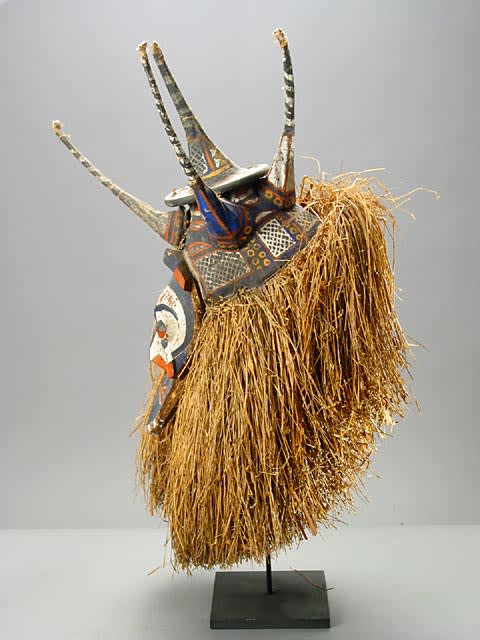Yaka Polychrome Circumcision Mask, 20th Century CE
Wood and Raffia
24
PF.6230b
Further images
This colorful Yaka mask is associated with the dance ceremonies surrounding the male circumcision and initiation rites, known by the word mukhanda. These ceremonies are meant to advance to young...
This colorful Yaka mask is associated with the dance ceremonies surrounding the male circumcision and initiation rites, known by the word mukhanda. These ceremonies are meant to advance to young men’s maturity and, more important, to ensure their virility, and thus, the continuation of the tribe. The Kholuka mask is worn only by the initiated instructors who must teach the adolescent boys the ways of manhood. They are danced only at the end of the ceremony held to welcome the boys back from a period of isolation, honoring their transformation from boys into men. The dancer moves in rhythm to songs about adult masculinity, holding the mask by a handle emerging behind the chin, remnants of which survive on this example. Perhaps the most spectacular feature of this mask are the five conical protrusions that rise from the top of the mask like horns. It is possible that these extensions represent animal horns; however, it is more likely that they depict and elaborate coiffure. The features of the face, specifically the tubular eyes, slightly upturned nose, and open mouth with exposed teeth are all characteristic of the kholuka mask. While the colorful hues of red, blue, and white that enliven this mask appear purely decorative to our untrained eyes, to the Yaka, these polychrome patterns would be identified as relating to their cosmology. Thus this mask embodies the Yaka’s perception of the world as they see it, ushering young men from their boyhood past into the realm and responsibilities of adulthood.







